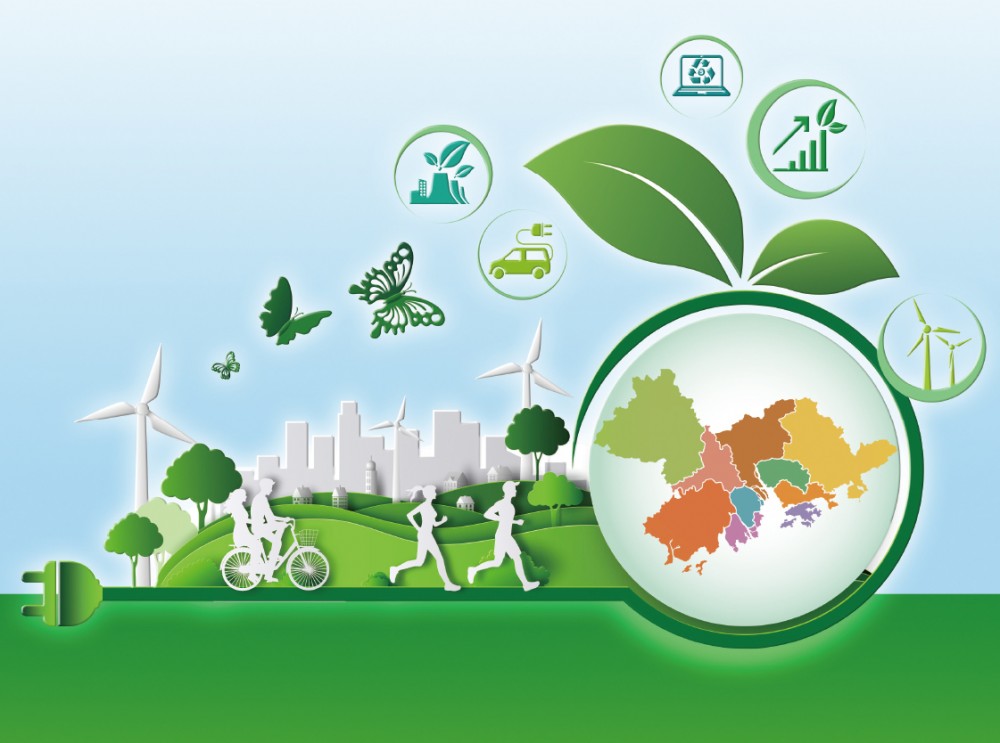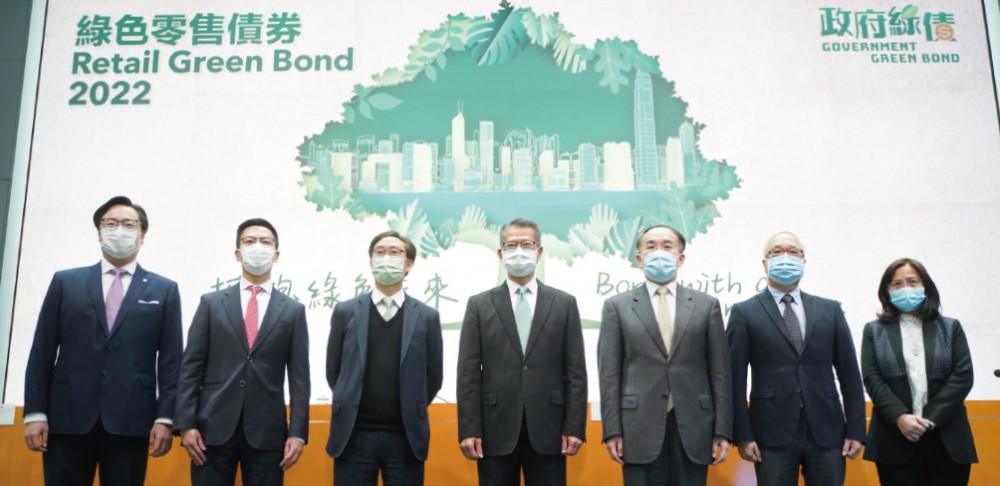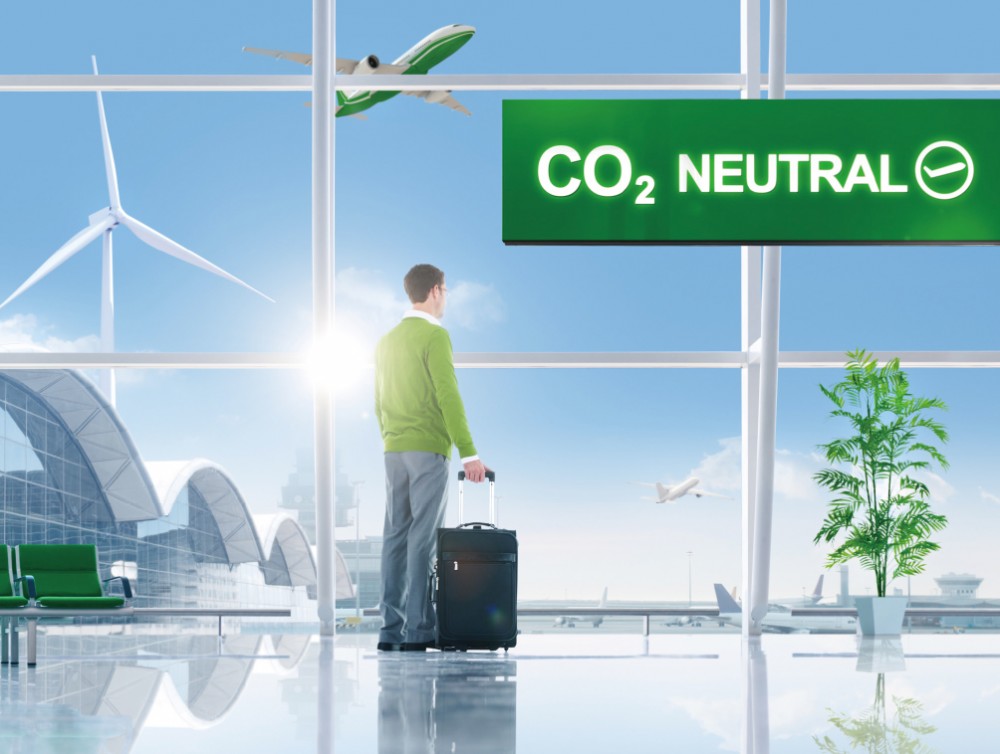The Guangdong-Hong Kong-Macao Bay Area is one of China’s most economically vigorous regions. It can set a guiding example for the rest of the country by becoming the first carbon neutral territory. By the same token, Hong Kong is well positioned to support China’s green economy transition by providing financing and certification for national and Greater Bay Area green projects.
Christopher Hui: Fostering China’s Carbon Neutrality with Hong Kong’s Green Finance Advantage

 Christopher Hui, Secretary for Financial Services and the Treasury is confident that Hong Kong could match international capital with quality green projects under China’s support. By doing so, it will contribute to China’s goal of peaking carbon emissions and achieving carbon neutrality by 2060, while driving Hong Kong towards its own carbon neutrality goal by 2050.
Christopher Hui, Secretary for Financial Services and the Treasury is confident that Hong Kong could match international capital with quality green projects under China’s support. By doing so, it will contribute to China’s goal of peaking carbon emissions and achieving carbon neutrality by 2060, while driving Hong Kong towards its own carbon neutrality goal by 2050.
Under the Outline Development Plan for Guangdong-Hong Kong-Macao Greater Bay Area, Hong Kong is supported to become the green finance center of the Greater Bay Area. Hui highlighted the highly competitive edge of Hong Kong in developing green and sustainable finance. He said, “To support green enterprises and projects of the Greater Bay Area, more and more organizations are encouraged to make use of Hong Kong’s financing platform and professional services to conduct green and sustainable finance and accreditation.”
Promoting green finance with relaxed subsidy threshold
Following the launch of the Green and Sustainable Finance Grant Scheme, eligible bond issuers and loan borrowers in the relevant areas would be subsidized for their expenses on bond issuance and external review services. Hui said that the authorities have lowered the minimum loan requirement for external review services from HKD 200 million to 100 million in March 2022 such that more companies may obtain green finance. As of early December 2022, the scheme has approved subsidies worth close to HKD 150 million.
Meanwhile, Hui was glad that the Shenzhen municipal government had issued offshore RMB local government bonds, which included a significant green portion, in Hong Kong for two years in a roll during 2021 and 2022. At present, the Qianhai authorities are also providing subsidies worth up to RMB 2 million to Qianhai companies issuing green bonds in Hong Kong. These actions are a true testimony to Hong Kong’s position as the premier green finance hub of the Greater Bay Area.
Expanding tax incentives to attract Mainland bond issuers
 Hui stressed that the HKSAR government would amend its law and extend the coverage of tax incentives to attract more mainland local governments to issue green or other bonds in Hong Kong.
Hui stressed that the HKSAR government would amend its law and extend the coverage of tax incentives to attract more mainland local governments to issue green or other bonds in Hong Kong.
“‘Core Climate’, the brand-new international carbon marketplace launched by the Hong Kong Stock Exchange, provides effective and transparent trading of voluntary carbon credits and instruments across Asia and beyond. It is also the one and only carbon market that offers HKD and RMB settlement for the trading of international voluntary carbon credits.” According to Hui, the first month of the platform saw more than 40 trades, which represent a total volume of around 400,000 tons of carbon credits.
A three-prong approach to augment strengths in green finance
Products, talents and market are the three essential factors that support the building of a green finance ecosystem. Hui explained that the government has always attached a huge importance to adopting a three-prong approach. “In terms of market development, the authorities have established the Government Green Bond Programme in 2018 and successfully issued close to USD 10 billion worth of green bonds. Within the five years from 2021 - 2022, total issuance will increase to more than 5 times the current total.”
As for talent nurturing, Hui said that the government had rolled out many initiatives to strengthen the relevant local talent pools. “The three-year ‘Pilot Green and Sustainable Finance Capacity Building Support Scheme’ was launched in December 2022. It aims at facilitating relevant persons to take part in training related to green and sustainable finance.”
Establishing a carbon trading ecosystem
Regarding the carbon market, Hui pointed out that the next step that follows the launch of “Core Climate” would be scaling up products and services, as well as enhancing the trading mechanism and infrastructures, etc. All these would shape Hong Kong into a leading international carbon trading center.
Going forward, Hui emphasized that the HKSAR government will continue to leverage various channels to accelerate green finance, and encourage more organizations to make good use of Hong Kong’s capital market and its finance and professional services for green and sustainable finance and certification. This would further propel Hong Kong’s position as the green and sustainable finance hub in the region, and contribute positively towards the carbon neutrality goals of Hong Kong and China.
James Wang : Promoting Carbon Neutrality in the Greater Bay Area

Promoting carbon neutrality is now a common goal for many countries and regions. James Wang, Research Director of Bay Area Hong Kong Centre, believes the Greater Bay Area’s population will continue to grow and demand for air travel is set to increase in tandem. To help China achieve “peak carbon” by 2030 and “carbon neutrality” by 2060, the aviation sector is a natural starting point.
Data shows that in 2019, the air transport industry recorded 918 million tonnes of carbon emissions, up 29% on 2013 and accounting for about 2% of the global total. 85% of aviation carbon comes from air passenger transport and the USA, China and the UK are the top three countries in the world in terms of carbon emissions from this sector. Together, these countries clocked more than 40% of global air passenger transport emissions. Evidently, air transport is a critical link to achieving the goal of carbon neutrality.
Unifying aviation systems to improve aviation carbon emissions in the Greater Bay Area
“On a typical basis, a Boeing 747 aircraft consumes approximately 7,840 kg of aviation fuel from take-off, climbing to descent. For longer routes, an additional 10.1 kg of fuel is consumed for every additional 1,000m.” Wang also points out that a flight of 530 kilometers, for example, would result in a total emission of over 33 tonnes of carbon dioxide, which is equivalent to the net carbon emission of an aircraft circling for more than 20 minutes in the air.
 Based on these figures, he stressed that the aviation industry must enhance energy efficiency by improving their aircraft’s engine efficiency and overall weight. It would be the first important step to save energy and reduce emissions. “Cities in the Greater Bay Area can start by mitigating airspace jam or congestion to minimize additional carbon emissions caused by aircraft taxiing on the runway waiting to take off, or circling in the air waiting to land.”
Based on these figures, he stressed that the aviation industry must enhance energy efficiency by improving their aircraft’s engine efficiency and overall weight. It would be the first important step to save energy and reduce emissions. “Cities in the Greater Bay Area can start by mitigating airspace jam or congestion to minimize additional carbon emissions caused by aircraft taxiing on the runway waiting to take off, or circling in the air waiting to land.”
Wang explains that one key factor is to centralize and coordinate airspace management of various regional airports. The first move to this end would be unifying the Mainland and Hong Kong aviation Systems. He suggests the HKSAR government to be more proactive in taking forward the issue of unified airspace management, and at the same time take a long-term view of future development, so as to benefit all municipalities in the Greater Bay Area.
Introducing Hong Kong’s green technology to the Greater Bay Area
Wang also points out that commercial buildings represent the highest proportion of energy consumption in Hong Kong, accounting for about 40%, while residential buildings also account for 20%. The main source of energy consumption comes from air conditioning. He suggests the Government to set KPIs as a means to control excessive energy consumption of air-conditioners. In addition, since approximately one-third of future public housing estates can be built with materials that insulate buildings from most of the thermal energy, it would contribute significantly to saving energy and reducing carbon emissions.
Wang is convinced that Hong Kong has always kept abreast of other regions in sustainable development, and there is much to be gained if we could introduce our green technologies to the Greater Bay Area. “Sustainability is based on the three principles of social equity, environmental protection and economic efficiency. It is particularly conducive to the Greater Bay Area’s long-term approach of ‘one country, two systems, three currencies’. As long as we consider regional development and planning with this mindset, the word ‘integration’ can be given a deeper meaning.”




